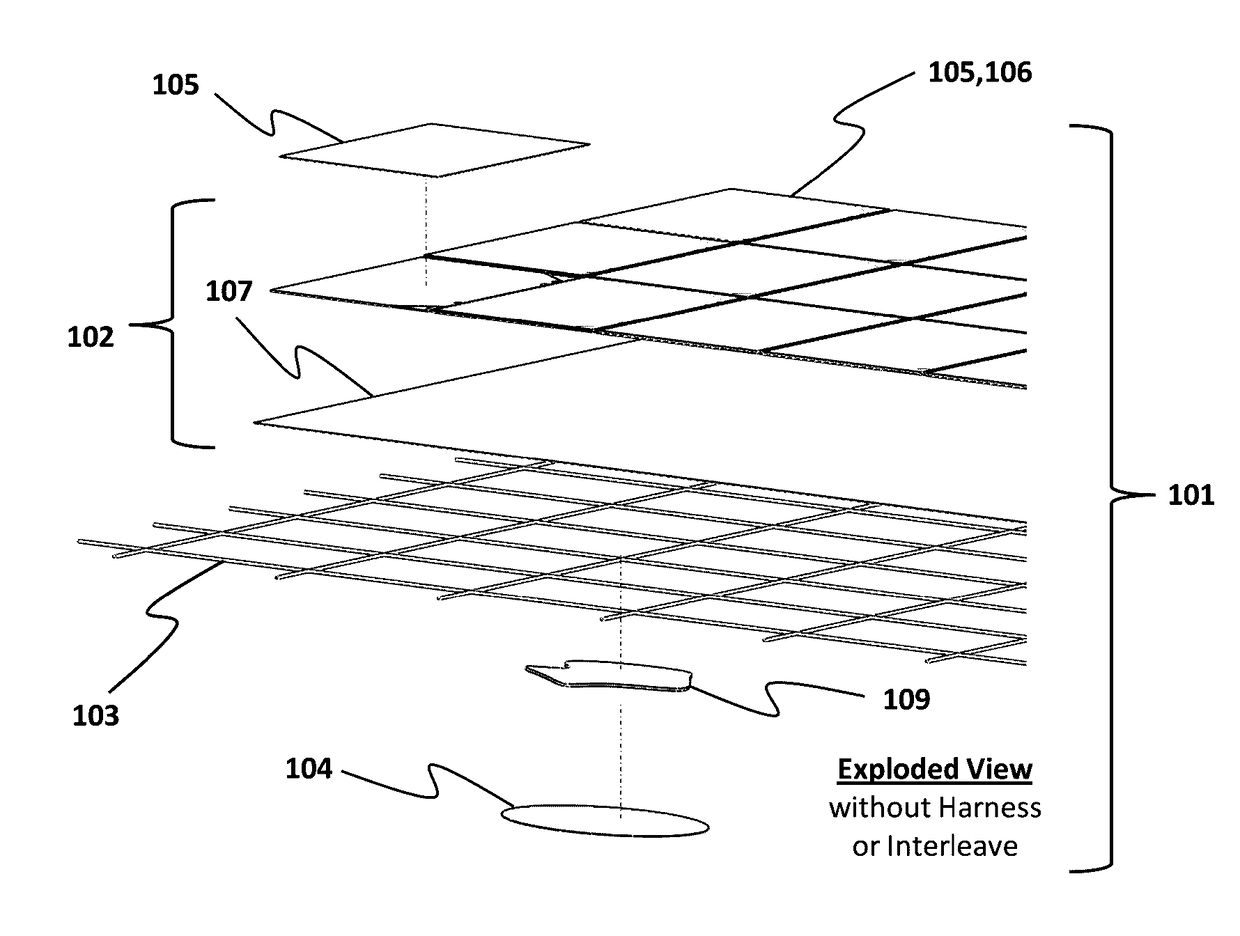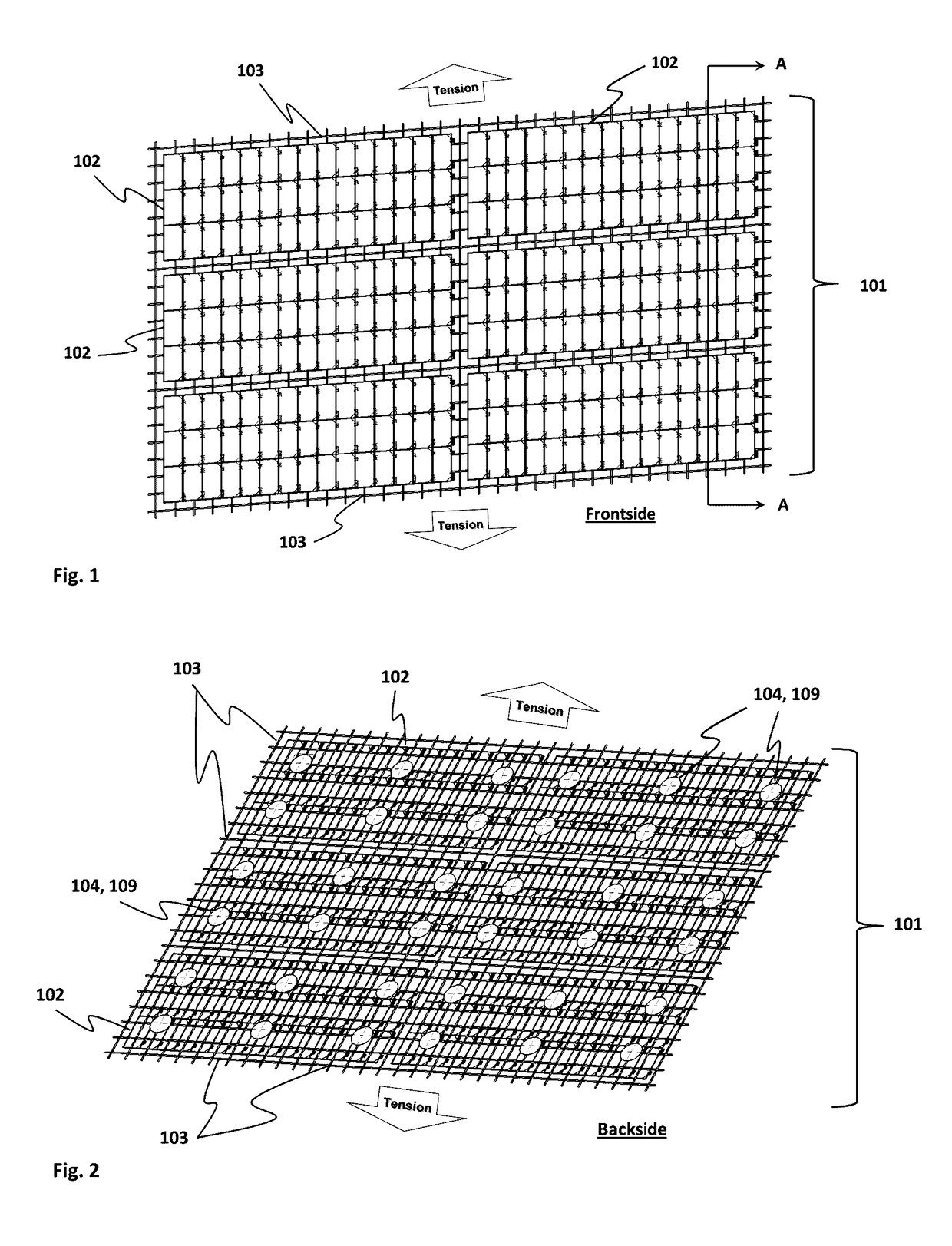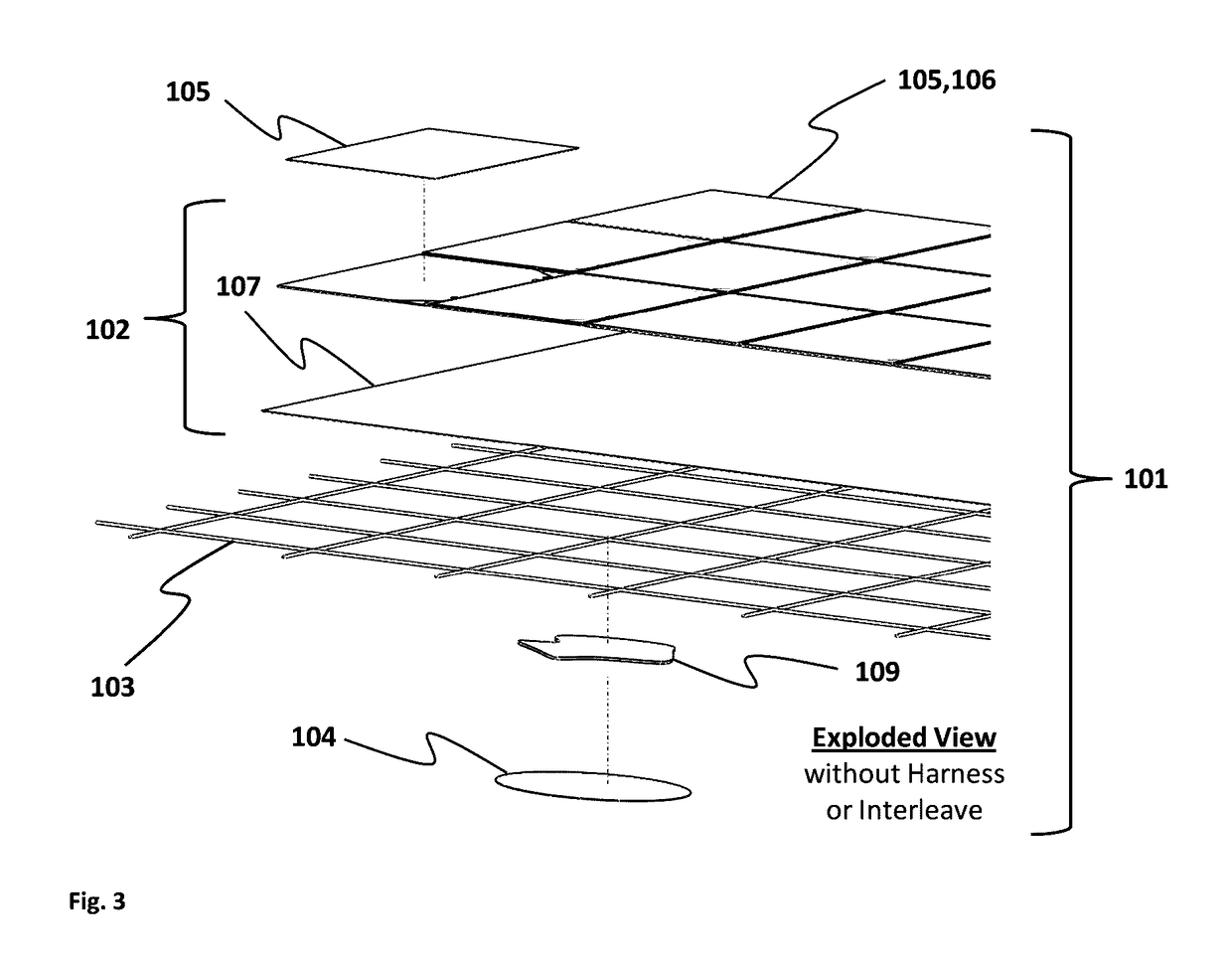Integrated modular photovoltaic blanket assembly for space solar array
a solar array and solar array technology, applied in the field of solar arrays for spacecraft, can solve the problems of difficult rapid repair or re-configuration to a variety of planar aspect ratios, electrical subsystems, and one-piece blanket constructions that are not modular or reconfigurable, and achieve high quantity, high quality, and economic value.
- Summary
- Abstract
- Description
- Claims
- Application Information
AI Technical Summary
Benefits of technology
Problems solved by technology
Method used
Image
Examples
Embodiment Construction
[0043]A flexible integrated modular photovoltaic blanket assembly (101) for a solar array is disclosed. In a preferred embodiment the technology is an accordion foldable or rollable flexible photovoltaic solar panel blanket assembly (101) for a spacecraft comprising a plurality of common photovoltaic standard power modules (102) spaced in an orthogonal array. The modules are mechanically attached with multiple low profile fasteners (104, 109) on their backside to a tensioned continuous surface backplane structure (103) such that the backplane (103) structure is sandwiched between the modules (102) and multiple low profile fasteners (104, 109). Each module (102) comprises a rectangular substrate with solar cell assemblies (105, 106) laid onto the substrate (107). The substrate (107) includes circuitry for incorporating the solar cells into a circuit. The module (102) includes a pair of extended electrical leads carrying circuit connections for the circuitry that provide connections t...
PUM
 Login to View More
Login to View More Abstract
Description
Claims
Application Information
 Login to View More
Login to View More - R&D
- Intellectual Property
- Life Sciences
- Materials
- Tech Scout
- Unparalleled Data Quality
- Higher Quality Content
- 60% Fewer Hallucinations
Browse by: Latest US Patents, China's latest patents, Technical Efficacy Thesaurus, Application Domain, Technology Topic, Popular Technical Reports.
© 2025 PatSnap. All rights reserved.Legal|Privacy policy|Modern Slavery Act Transparency Statement|Sitemap|About US| Contact US: help@patsnap.com



